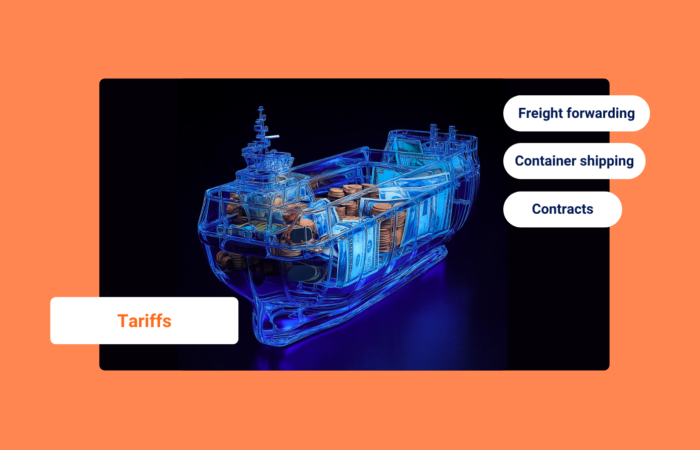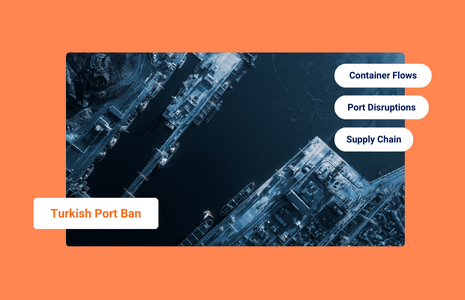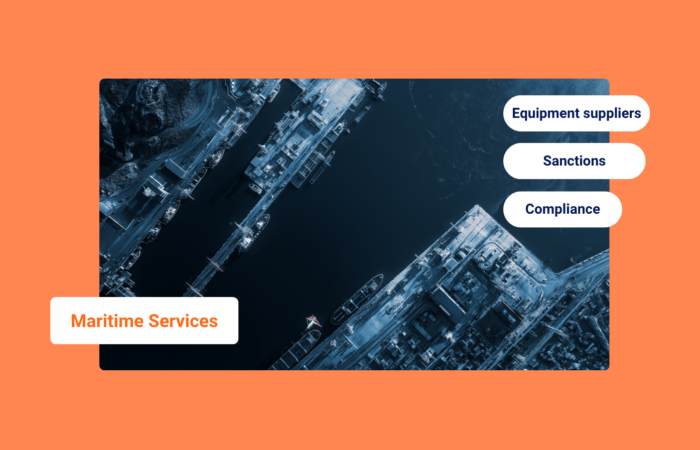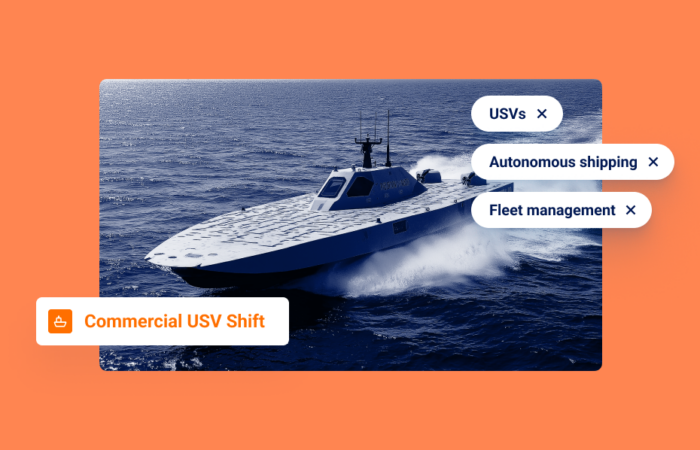3 Common Ocean Freight Visibility Challenges and How to Avoid Them
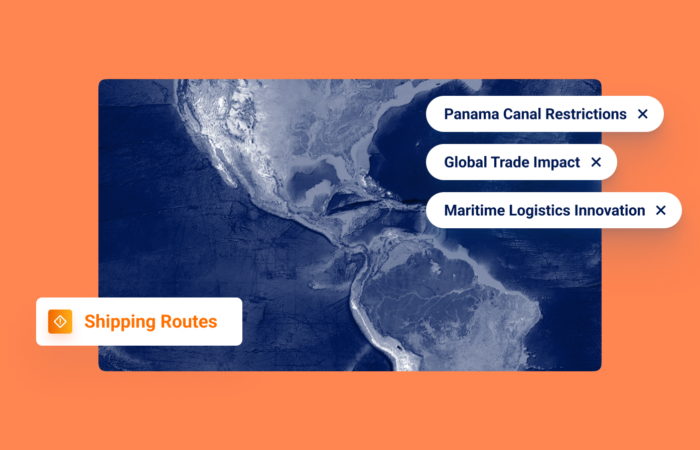
What’s inside?
Ocean freight tracking is extremely important. Over 90% of shipments go through the ocean and often the ocean leg accounts for half of the total transportation time in the supply chain. It’s critical that this portion of the supply chain goes as smoothly as possible, to minimize the risk of delays.
Once a container is loaded on a vessel, tracking it and anticipating its arrival time remains a constant challenge. Some of these challenges include coronavirus outbreaks, the Russia-Ukraine war, evolving port congestion, the unreliability of vessel schedules, lack of visibility into shipments’ progress in real-time, etc. An ocean freight visibility AI system trained on the latest port trends that delivers real-time updates can help you stay on target and optimize your ETA as conditions change. If you can properly predict and identify roadblocks in advance, then you can rebook those connections, or switch from truck to rail.
Let’s take a deeper look at three common ocean freight visibility challenges and how to avoid them…
- The Importance of Container and Vessel Tracking
With 40% of all shipments globally passing through transshipment ports, one container journey is often carried out by multiple vessels. For example, container X can leave its original port of loading (POL) on vessel A, travel to a transshipment port, be discharged from vessel A, and loaded onto vessel B, which will transport it to the final port of discharge (POD). In more complex scenarios, there could even be one or two more intermediate ports. Container tracking, and ocean freight shipment tracking, in general, are essential because this journey is often complex and full of unknowns.
But transshipments are not the only reason vessel tracking is so important in assessing container ETAs. In order to accurately assess when a specific vessel will be allocated a berthing slot at a port, it is critical to understand how many additional vessels are heading towards that same port and will reach it earlier. Advanced algorithms can help predict the berthing order at each of the ports along the route of a container vessel, which in turn will help understand how long a vessel of interest will be delayed at each port en route to the POD.
This kind of insight is highly valuable for sea freight tracking when trying to accurately predict the arrival of the vessel carrying your container, and from there, derive the ETA of your container. During this complex journey, ocean freight visibility and an ocean freight tracking system are must-have assets. Accurate Maritime AI™ ETA prediction allows land transportation to be pre-planned, with minimal detention and demurrage fees incurred.

- Over-Reliance on Unreliable Schedule Information
The past few years have seen a huge dip in schedule reliability, initiated by the chaos that followed the coronavirus outbreak. As the world attempts to recover, the numbers are slightly improving, but are still low. According to Sea Intelligence, “global schedule reliability seems to have broken the trend seen since the start of this year, with schedule reliability increasing by 3.6 percentage points in June 2022 to 40.0%… The average delay for LATE vessel arrivals has been dropping sharply so far this year but remained unchanged M/M at 6.24 days in June.”
Vessels carry hundreds and thousands of containers at a time, shipped by any number of carriers, each advertising its own schedule and ETA. This leads to conflicting schedules and ETAs, and makes it extremely difficult to plan the remainder of the shipment route.
Real-time actionable insights on container delivery status help predict the risk of delays or disruptions, and avoid allocating costly resources to deal with the problem. An ocean freight visibility solution is key. Windward Ocean Freight Visibility outperforms the carriers’ estimations ~80% of the time.
- Don’t Underestimate the Importance of Understanding Port Congestion
It is critical to understand the many factors that affect port congestion. There is not a standard regarding the information provided by ports. Different ports provide different information and some ports do not provide any information at all – especially not in real-time. Congestion can’t be estimated just by the number of vessels anchored or drifting in port waiting areas. Transit time to port is the most reliable measurement of congestion because it accounts for vessels in port waiting areas, as well as the many vessels that slow-steam their way into ports when they are known to be congested, or when the vessel doesn’t expect to get a berthing slot any time soon.
Another important element is measuring the port call lengths, which point to turnover times at the port and its overall efficiency. Some ports can accommodate vessels of 25,000 TEUs, while others can only do up to 1,500 TEUs. This is a major difference, as the ports with the larger capacity will be loading and unloading a lot more containers and it will take them a longer time. The ports that are handling fewer containers will take less time. But this doesn’t mean that one is more efficient than the other. To understand this, it’s important to normalize the numbers. Measuring the efficiency per 1,000 TEUs enables easier analysis of the data and more accurate insights. Two cars can drive for five hours, but one can cover more miles than the other by driving at a faster speed. You’ll know which one was driving faster by calculating the number of miles both cars traveled in that time span, and normalizing their speed by measuring the number of miles they managed to cover in an hour – i.e. m/h. Looking at the time vessels spend in ports per 1,000 TEU is the same idea.
This is critical for monitoring port congestion developments, which can hint at when it’s the best time to book landside transportation before peak season increases congestion and prices skyrocket – often to 2-4 times their regular price due to equipment scarcity. Being aware and prepared for the congestion levels at the various ports along the container journey can help avoid delays (and paying detention and demurrage fees) as well as assist in avoiding these congested ports and looking for alternative options.
This is possible with the Ocean Freight Visibility solution. It increases control and reliability with real-time visibility on 99% of global shipments, outperforming the carriers on ~80% of ETA predictions.







